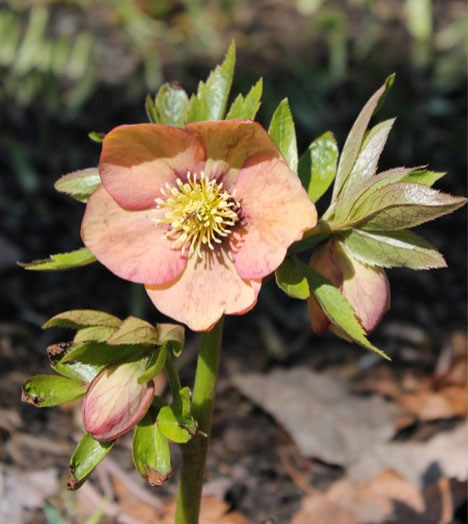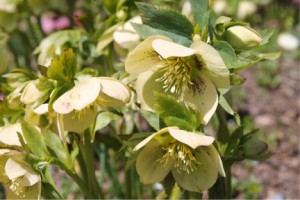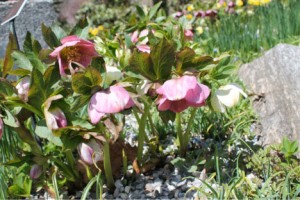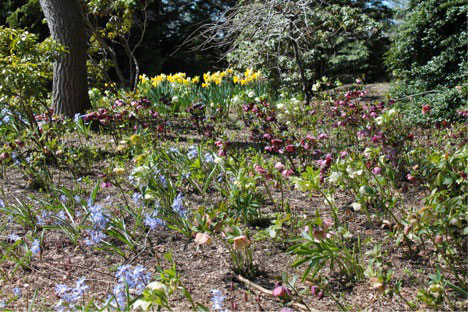Say Hello to Hellebores!
Posted in Horticulture on April 23 2015, by Rachel Rock-Blake
Rachel Rock-Blake is the Assistant Curator of Outdoor Collections at NYBG.
 As the snowdrops fade, daffodils explode in a burst of yellow across the landscape. Tulips begin to emerge, peeking through recently planted violas, and magnolia buds crack open. These all provide a lavish display, but in the midst of this let us take a moment to appreciate the sustained beauty of our hellebores. Since snow still covered much of the garden in late winter, our considerable collection of Helleborus species and hybrids have been consistently blooming in shades of pink, white, deep purple, green, and yellow. They really deserve a place in your garden, too.
As the snowdrops fade, daffodils explode in a burst of yellow across the landscape. Tulips begin to emerge, peeking through recently planted violas, and magnolia buds crack open. These all provide a lavish display, but in the midst of this let us take a moment to appreciate the sustained beauty of our hellebores. Since snow still covered much of the garden in late winter, our considerable collection of Helleborus species and hybrids have been consistently blooming in shades of pink, white, deep purple, green, and yellow. They really deserve a place in your garden, too.
While there are many species in the genus Helleborus, recent hybridization has produced a wide range of colorful, easy to grow plants. Helleborus × hybridus cultivars are best grown in partial shade in evenly moist, well-drained soil. In this climate blooms emerge on new growth in late winter, and can persist through spring. Large sepals take the place of petals as the colorful portion of the flower, and flowers nod at the top of 12- to 15-inch stalks. New leaves emerge around this time, which grow into an excellent glossy evergreen ground cover. Old leaves can be removed in the spring for aesthetic reasons, but care should be taken not to damage the new growth.

Here at the garden we use hellebores in a variety of settings. They are planted in shady nooks along many of our garden walkways. They can be seen in planters as part of our earliest displays at the Mosholu Gate entrance. There is also a mass planting just as you enter the Rock Garden, displaying a wide variety of colors in a seasonally sunny location. Despite their preference for shade, they can do very well in locations that are sunny in winter and spring before deciduous plantings leaf out and provide relief from the summer heat.

One of the big perks of growing these plants is that they are unappealing to deer. In fact, they are toxic to people as well, which has led to the historic use of certain species as a source of poison as well as for medicinal purposes. As long as you don’t eat them, however, you will enjoy these plants for many years as they slowly seed in and naturalize in your garden. Cut a few stalks to bring indoors, and you will enjoy the promise of spring even on a snowy March day.


